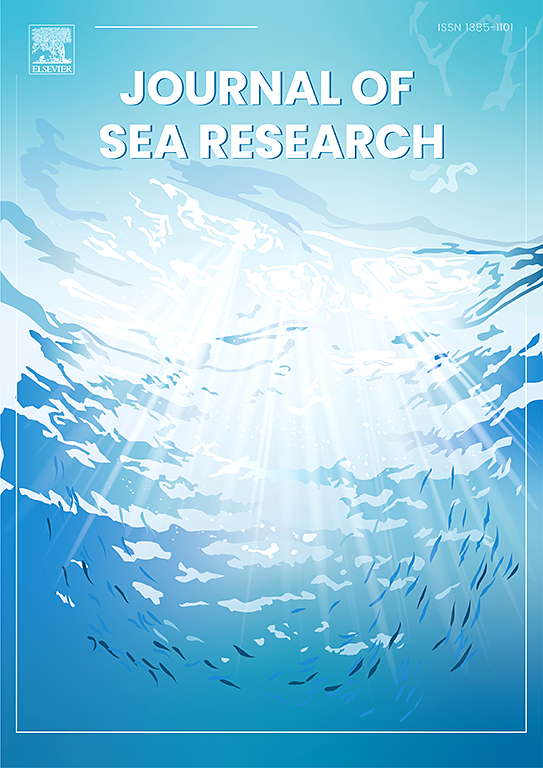Inventory of the biofouling community on the first offshore solar energy farm in the North Sea
IF 2.9
4区 地球科学
Q2 MARINE & FRESHWATER BIOLOGY
引用次数: 0
Abstract
Offshore renewable energy is rapidly expanding in the North Sea. Offshore solar is a new renewable energy technology currently developing in the Netherlands, with the first offshore tests of four years at rough conditions being successfully completed. Submerged parts of offshore renewable energy devices get fully colonised by fouling organisms, which take advantage of the new artificial habitats. In this study, we conducted an exploration of the fouling fauna that colonised the floaters of a solar farm installed for the first time in offshore waters in the Netherlands. The biofouling attached to the underwater parts of 18 floaters forming 3 clusters were sampled in a quantitative way by scuba divers. Macrofauna species and biomass were quantified in all samples. In total, 47 different taxa, including 12 non-indigenous species, were identified to occur on the floaters. Arthropoda (mainly individuals of the genus Jassa) was the most abundant phylum, while Mollusca (mainly blue mussel Mytilus edulis) showed the largest biomass. No significant differences in abundance nor biomass were observed between the two months of installation. Non-indigenous species were more abundant in number but contributed less to the total biomass compared to native species on the examined floaters, regardless of the month they were installed. The findings of this study suggest that, like any offshore artificial structure, offshore solar farms could act as stepping-stones for the spread of species. However, long-term monitoring is needed to confirm these results and gain a more comprehensive understanding of the development of fouling fauna on offshore solar farms.
北海首个海上太阳能农场的生物污染群落清单
海上可再生能源正在北海迅速扩张。海上太阳能是荷兰目前正在开发的一种新的可再生能源技术,在恶劣条件下进行的为期四年的首次海上测试已成功完成。海上可再生能源装置的水下部分被污染的生物完全占领,这些生物利用了新的人工栖息地。在这项研究中,我们对荷兰近海首次安装的太阳能农场的漂浮物上的污染动物群进行了探索。采用水肺潜水器对3组18个漂浮物水下部分附着的生物污垢进行了定量采样。对所有样本的大型动物种类和生物量进行了定量分析。共鉴定出47个不同的分类群,其中包括12个非本地物种。节肢动物(主要是沙蝇属的个体)生物量最多,软体动物(主要是蓝贻贝)生物量最多。在两个月的安装期间,没有观察到丰度和生物量的显著差异。非本地物种在数量上更丰富,但对总生物量的贡献比本地物种少,无论它们是在哪个月安装的。这项研究的结果表明,像任何海上人工结构一样,海上太阳能农场可以作为物种传播的垫脚石。然而,需要长期监测来证实这些结果,并对近海太阳能农场污染动物的发展有更全面的了解。
本文章由计算机程序翻译,如有差异,请以英文原文为准。
求助全文
约1分钟内获得全文
求助全文
来源期刊

Journal of Sea Research
地学-海洋学
CiteScore
3.20
自引率
5.00%
发文量
86
审稿时长
6-12 weeks
期刊介绍:
The Journal of Sea Research is an international and multidisciplinary periodical on marine research, with an emphasis on the functioning of marine ecosystems in coastal and shelf seas, including intertidal, estuarine and brackish environments. As several subdisciplines add to this aim, manuscripts are welcome from the fields of marine biology, marine chemistry, marine sedimentology and physical oceanography, provided they add to the understanding of ecosystem processes.
 求助内容:
求助内容: 应助结果提醒方式:
应助结果提醒方式:


